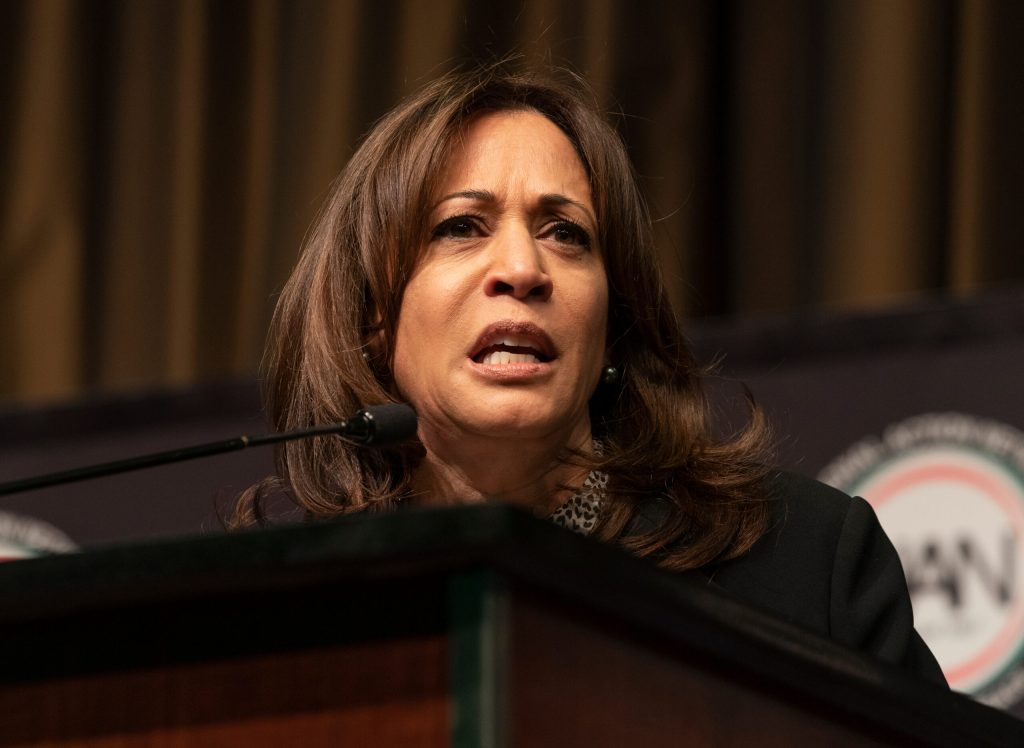
Wisconsin, a critical battleground state that has kept the nation on its toes in recent presidential elections, finds itself yet again at the epicenter of a tightly contested race. According to a new poll, former President Donald Trump and Vice President Kamala Harris are neck and neck among registered voters, although it appears that Harris is losing ground in the state since Biden’s departure.
The political landscape has been nothing short of tumultuous in the past few months. The departure of President Joe Biden from the race, a not-so-unexpected twist in July, left Democrats rallying behind Harris. The shake-up was further complicated by Trump’s narrow escape from an attempted assassination and the GOP’s national convention which saw Ohio U.S. Sen. JD Vance (R-OH) ascend as Trump’s vice-presidential pick. On Tuesday Harris, stepping up as the Democratic frontrunner, chose Minnesota Gov. Tim Walz as her running mate.
Despite the dramatics, the poll, which surveyed 877 registered voters between July 24 and August 1, reflects a political continuity from its June predecessor. Before Biden stepped aside, he and Trump were evenly matched at 50% among registered voters. Now, with Harris at the helm, she appears to have lost a point, with Trump edging slightly ahead at 50% to 49%. Among likely voters, however, Harris squeaks past Trump, leading 50 to 49 percent.
New WISCONSIN poll by Marquette
Among registered voters (n=877)
🟥 Donald Trump: 50%
🟦 Kamala Harris: 49%Among likely voters (n=801)
🟦 Kamala Harris: 50%
🟥 Donald Trump: 49%#3 (3.0/3.0) | 7/24-8/1 | R31/D29/I40 pic.twitter.com/EGfmTT2eUQ
— InteractivePolls (@IAPolls2022) August 7, 2024
Further complicating the electoral dynamics is independent candidate, Robert F. Kennedy, Jr., who is vying for attention on the November ballot. Should his candidacy gain traction, the impact on the major party candidates could be pivotal, reminiscent of the 2016 and 2020 elections where third-party votes played a crucial role in the tight finishes. Wisconsin’s voters, having swung the presidential outcomes by less than a percentage point in four of the last six elections, are no strangers to close races and the impact of each vote. The inclusion of multiple candidates on the ballot could once again tip the scales in unpredictable ways.
Wisconsin has solidified its status as a battleground state, evidenced by the closely contested presidential elections in 2016 and 2020. In the 2016 election, Republican nominee Donald Trump narrowly defeated Democrat Hillary Clinton by securing 47.2% of the vote, winning by a margin of just 0.77%, or approximately 22,748 votes. The victory marked a significant shift, as Wisconsin had consistently voted for Democratic candidates in previous elections. The trend of tight races continued into the 2020 election, where Democrat Joe Biden emerged victorious. Biden captured approximately 49.6% of the vote, narrowly outpacing Trump by a margin of 0.63%, equivalent to around 20,682 votes.
However, as the COVID-19 pandemic heightened the reliance on mail-in ballots, Wisconsin saw a massive surge in absentee voting. The shift led to logistical challenges and legal disputes over how votes were counted and the deadlines for receiving absentee ballots. After the election, with a narrow victory margin for Joe Biden, the Trump campaign requested a recount in two heavily Democratic counties, Milwaukee and Dane. Throughout this period, Wisconsin faced numerous lawsuits challenging various aspects of the electoral process, from the handling of absentee ballots to allegations of improper voting practices.



